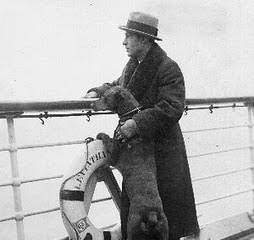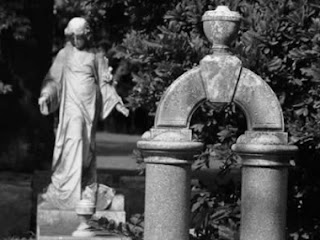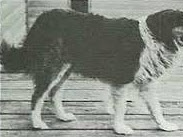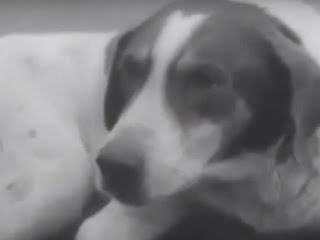It is said Kabar died of a broken heart after the death of his beloved master Rudolph Valentino.
 |
| Rudolph Valentino with Kabar on the deck of the Leviathan |
Rudolph Valentino, silent film legend and sex symbol of the 1920s, loved animals - especially dogs. Kabar, a Doberman pinscher given to him by a Belgian diplomat when the dog was only a few months old in 1922, was one of his "special" dogs that was almost always at his side. For unknown reasons, Valentino did not take Kabar with him on his trip to New York in 1926 - where he died prematurely on August 23 at the age of 31.
At the time of Valentino's death, Kabar (some 3,000 miles away in Hollywood) started a mournful howling. Alberto, Valentino's brother, was able to console him some, but the broken-hearted dog was almost constantly sick. He later ran away from home, returned a few months later in poor shape, refused to eat and passed away within a few days on January 17, 1929.
Kabar was buried at the Los Angeles Pet Cemetery. Some claimed to have seen Kabar's ghost at Valentino's mansion and at the grounds of the cemetery - still searching for his beloved master.





























